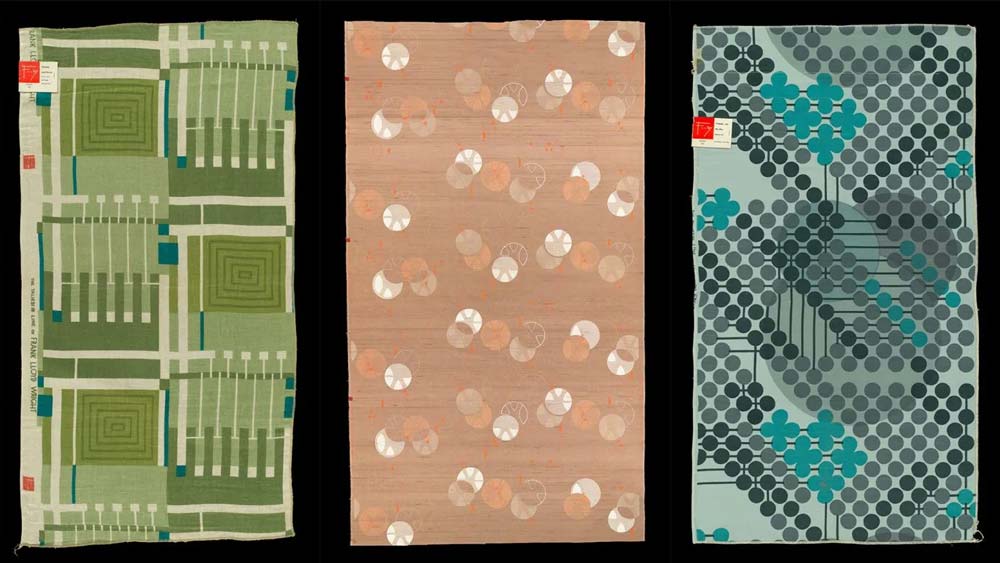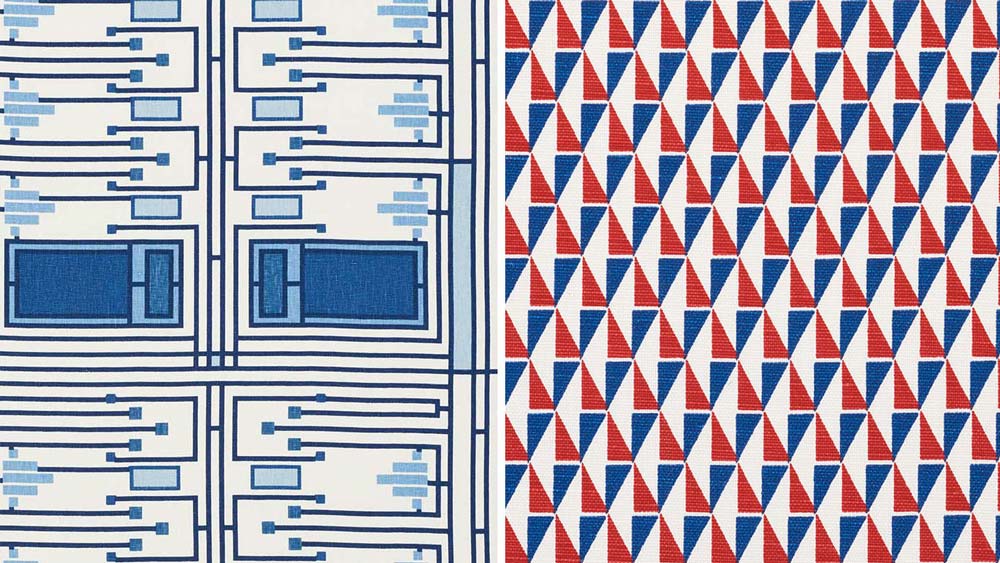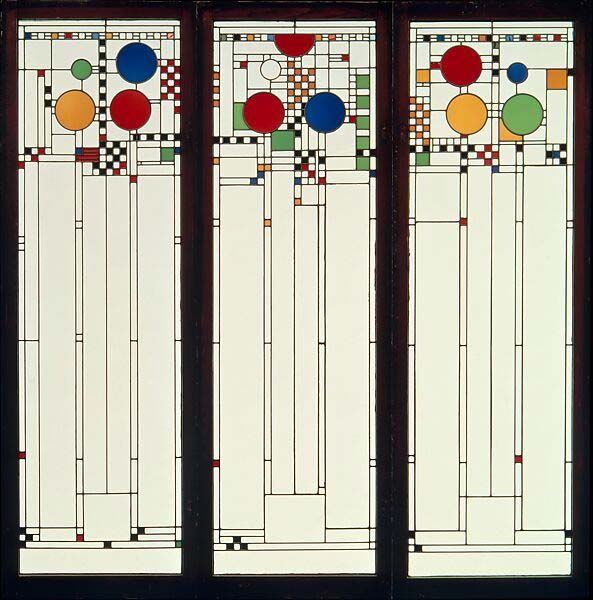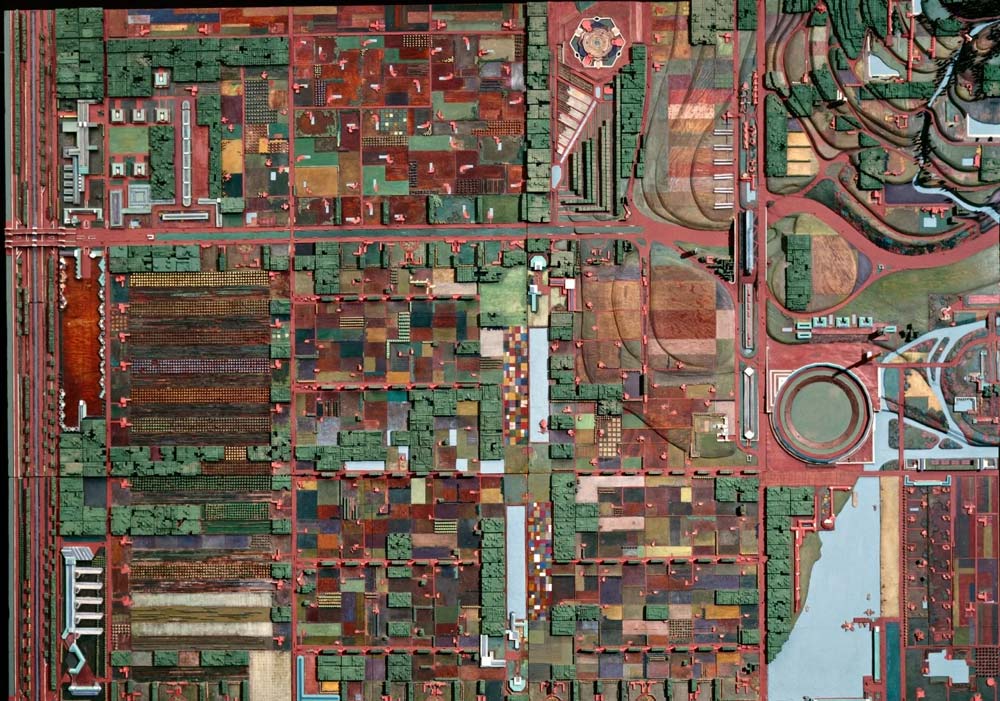Frank Lloyd Wright Designed More Than Buildings: The Multifaceted Legacy of a Master Architect

Introduction
Frank Lloyd Wright is widely recognized as one of the greatest architects in history, known for his innovative approach to architecture and his ability to harmonize buildings with their natural surroundings. However, Wright’s creative genius extended far beyond buildings. He designed furniture, textiles, stained glass, and even entire communities. His philosophy of organic architecture, which sought to create harmony between humanity and nature, guided not only his architectural designs but also his approach to other art forms. In this blog post, we’ll explore how Frank Lloyd Wright’s design work spanned multiple fields, from furniture to urban planning, and how his interdisciplinary designs helped shape modern design and architecture as we know it today.
Frank Lloyd Wright’s Philosophy: Organic Architecture
Harmonizing with Nature
Frank Lloyd Wright’s work wasn’t confined to just creating buildings; it was about creating a complete environment where architecture, interior design, and the surrounding landscape all worked together in harmony. Wright coined the term “organic architecture” to describe this approach, emphasizing that buildings should blend with and enhance their natural surroundings.
For Wright, nature was the ultimate source of inspiration, and he believed that architecture should not stand apart from the land but rather be an integral part of it. His most famous buildings, like Fallingwater in Pennsylvania, are prime examples of this philosophy, with structures that seem to grow directly out of the earth, merging stone, wood, and glass with the landscape.
The Unity of Art and Life
Wright’s commitment to the idea that “form follows function” was central to his belief in a holistic approach to design. He wanted every aspect of a building and its surrounding environment to be cohesive, with the design reflecting both practicality and beauty. Wright extended this philosophy beyond buildings, applying it to all aspects of his work, from furniture to textiles, ensuring that each element contributed to the overall aesthetic and functional unity.
Designing Furniture: The Usonian Vision
Wright’s Approach to Interior Design
Frank Lloyd Wright didn’t stop at designing just the structure of a building. He believed that the furniture within it should also be designed with the same attention to detail and harmony. Wright often designed custom furniture for his buildings, ensuring that every piece was perfectly suited to its environment. His furniture designs were typically low-profile, with horizontal lines and natural materials like wood, which complemented the organic architecture of his homes.
In the 1930s, Wright introduced the Usonian houses, which were affordable homes designed for the middle class. As part of this vision, he also created a line of furniture that embodied his minimalist, functional approach. The Usonian furniture was simple yet elegant, with open shelving, geometric forms, and built-in seating. It was designed to complement the open floor plans of his houses, creating a seamless flow between interior and exterior spaces.
Iconic Furniture Designs
Some of Wright’s most iconic furniture designs include the Taliesin chairs and the Barrel Chair. The Taliesin chair, named after his home in Wisconsin, was a simple, yet functional design, made from wood and leather, with low arms and a streamlined profile. The Barrel Chair, designed for the Hollyhock House in California, featured a circular, enclosed back that echoed Wright’s signature curves and organic forms.
These furniture pieces were not just functional—they were works of art in themselves, embodying Wright’s belief that the details of interior design should be as thoughtfully crafted as the architecture itself.
Textiles and Fabric: The Art of Pattern and Texture
Wright’s Textile Designs
Frank Lloyd Wright’s influence extended to textiles and fabric, where he designed patterns and textiles that echoed the motifs found in his architecture. He believed that the fabrics in a room should complement the overall design of the building, just as furniture and decor should align with the architecture. Wright created beautiful patterns for curtains, upholstery, and even wallpaper, with geometric and nature-inspired designs.
His famous “Tree of Life” motif, which originated as a stained glass window design, was also translated into textiles. The repeating patterns found in Wright’s fabrics often mirrored the lines and curves in his architecture, creating a cohesive visual language across all aspects of a space.
The Influence of Pattern in Architecture
Wright’s use of patterns extended beyond textiles and into the architecture itself. Many of his buildings feature decorative elements like geometric patterns, stylized motifs, and repeating lines that were a direct reflection of his love for pattern and texture. Whether in the intricate designs of his stained glass windows or in the wooden screens used in his interiors, Wright’s attention to pattern was integral to the overall aesthetic of his buildings.
Stained Glass: The Beauty of Light and Color
Wright’s Stained Glass Designs
One of the most distinctive features of Frank Lloyd Wright’s architecture is his use of stained glass windows. Wright was fascinated by the way light interacted with his buildings, and he designed custom windows to enhance the ambiance and mood of each space. His stained glass windows were not just decorative; they were integral to the overall design, allowing natural light to filter through in a way that transformed the interior space.
Wright’s stained glass designs were often geometric, with repeating patterns and vibrant colors that added texture and depth to the walls. His famous “Prarie Style” windows, which featured geometric shapes and stylized floral patterns, are a perfect example of how Wright brought beauty and artistry into every corner of his buildings.
How Stained Glass Became a Signature of His Work
Wright’s use of stained glass became a defining feature of his architecture, with many of his most famous buildings, like the Unity Temple and the Robie House, featuring stunning examples of his window designs. The interplay of light and color in these windows was intended to enhance the feeling of the space, creating a sense of harmony and tranquility.
Frank Lloyd Wright’s Urban Planning: Designing Communities
The Broadacre City Concept
In addition to designing individual buildings, Frank Lloyd Wright also had ambitious ideas for urban planning. One of his most famous projects was the Broadacre City, a concept for a new kind of decentralized urban environment. Wright envisioned a city where each family would have their own plot of land, with homes spread out across the countryside rather than clustered in crowded city centers. His goal was to create a balance between nature and urban living, with an emphasis on agriculture, self-sufficiency, and community.
Although Broadacre City was never realized, it represented Wright’s forward-thinking approach to urban planning and his desire to create a more harmonious way of living that was in tune with the land.
Wright’s Vision for Sustainable Living
Wright’s ideas for Broadacre City were deeply rooted in his philosophy of organic architecture. He believed that people should live in harmony with nature, and his urban planning ideas reflected that. His vision for sustainable living included green spaces, community gardens, and homes that blended seamlessly into the environment, much like his architectural designs.
Conclusion
Frank Lloyd Wright was much more than just a groundbreaking architect—he was a visionary designer who saw the interconnectedness of architecture, furniture, textiles, and even urban planning. His approach to design was holistic, emphasizing harmony, functionality, and beauty in all aspects of life. Whether designing a home, a piece of furniture, or a city, Wright’s focus was always on creating spaces that enriched the human experience and fostered a deeper connection to the natural world. Today, his legacy lives on in the timeless beauty and functionality of his work, inspiring generations of designers, architects, and artists.
References
Wright, F. L., 1992. The Natural House. New York: HarperCollins.
Linden, C., 2016. Frank Lloyd Wright: The Complete Works. London: Phaidon Press.
Tafel, L., 2018. Frank Lloyd Wright: In the Realm of Ideas. New York: Princeton Architectural Press.




